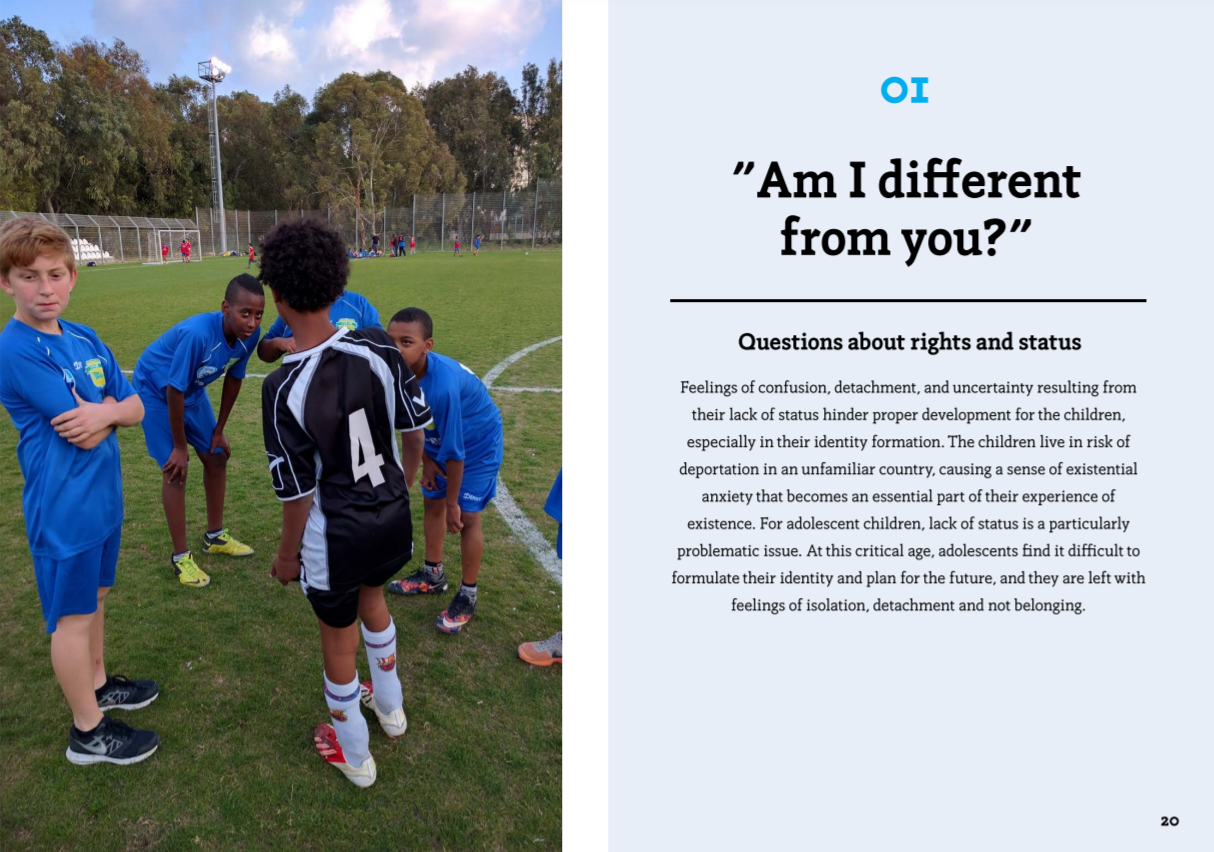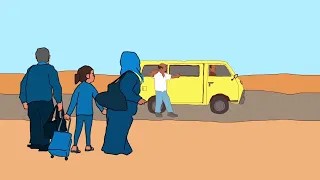With forced displacement reaching historic levels, schools worldwide are welcoming increasing numbers of refugee children. Explaining the situation of refugees and migrants to primary and secondary school children has become part of many educators’ daily work and is key to developing an informed generation of future leaders.
On this page, you can find free-of-charge UNHCR teaching materials on refugees and asylum seekers.
For more materials, visit the global website. In-depth reports are available on our publications page.
Slice of Life: Asylum seekers and refugees in Israel
Every asylum seeker has a story. Materials in this section explain why and how people come to Israel seeking protection and how they contribute to society.
Individual interviews with asylum seekers in Israel are available on the Takiru campaign page.
Test yourself on the facts about asylum seekers and refugees in Israel. Note: This video’s data relates to the refugee situation in Israel in 2016. The number of asylum seekers in Israel has since decreased to less than 45,000 and the Holot detention facility has closed, but the issues remain topical.
This episode of channel Kan 11’s “Pardon the Question” documentary series focuses on refugees, asking the questions that many want to know, but are hesitant to ask. What questions do your students have for asylum seekers? (Hebrew with English subtitles).
For African asylum seekers who crossed Israel’s southern border, Egypt’s Sinai Desert is the final – and often most dangerous – portion of their journey to safehaven in Israel. Ella Alterman’s film spotlights testimonies from Eritrean survivors of torture and human trafficking about the perils of arriving to Israel through this route.
Will the IDF allow Eritreans to enlist and serve? Many young asylum seekers who reached Israel alone without parents were given the chance to study in Israeli schools alongside local children. Now, they want to give back to the country that protected them (Hebrew with English subtitles).

This is Not a Place for Children: The Lives of the Children of Asylum-Seekers in South Tel Aviv: This collection of quotes from dozens of children (ages 11-17) captures their thoughts on home, work, neighborhood life, racism, and identity. Can your students relate to the quotes? How do their lives compare to these young people? Source: Levinsky Garden Library (English | Hebrew | Tigrinya).
Word Choice Matters
Understanding the terms refugees, migration, and asylum begins with understanding a few basics. The word refugee is often used as a blanket term for people displaced by war, violence or persecution. But there are different categories of displaced people, each with specific needs. Knowing what these categories mean exactly is important and will contribute to better understanding of this complex topic.
Watch these explainer animations yourself as a preparation for your lesson or training. Choose which sections you need and use them in your own lesson plans as well. The animations are suitable for use as teaching material for pupils age 12 and over.
You can also download Refugee or Migrant: Word Choice Matters (PDF – English | Hebrew) to help students learn the difference between who is considered a refugee and who is considered a migrant.
Asylum-seekers
Asylum-seekers are people seeking international protection from conflict and persecution.
Where do refugees go?
Most refugees are in developing countries. They tend to stay in neighbouring countries.
Download the class discussion sheets:
Additional resources
10 Facts about Refugees (2021) – See if your students can estimate the global figures concerning displaced people
Passages – A simulation game to create a better understanding of the problems of refugees
What is Racism? (Hebrew) – A Ministry of Education lesson plan (60-90 minutes) on everyday situations of racism and how racism interferes with the right to equality
Model UN Refugee Challenge
Model United Nations (Model UN) is a popular activity for those interested in learning more about how the UN operates. Hundreds of thousands of students worldwide take part every year at all educational levels.
The Model UN Refugee Challenge challenges young people worldwide to debate the major issues related to forced displacement. The best resolutions win awards and are shared with policymakers.










